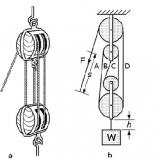COMPOSITE VIDEO SIGNAL – 21032
A composite video signal is the waveform that modulates a television (TV) or video carrier. The composite signal contains video intelligence as well as synchronization, blanking, and timing pulses. The bandwidth is typically 6 MHz (6 megahertz) for conventional fast-scan signals, and approximately 3 kHz (3 kilohertz) for slow-scan signals. A video camera, such as an image orthicon or vidicon, produces a fast-scan signal. Some robotic vision systems generate and analyze composite video signals.
The illustration shows the waveform for a single line of a color picture signal. There are normally 525 or 625 lines in a complete frame for standard fast-scan video. In robotic vision systems, there are advantages to using more lines per frame than is standard with television, in order to obtain improved image resolution.The illustration shows the waveform for a single line of a color picture signal. There are normally 525 or 625 lines in a complete frame for standard fast-scan video. In robotic vision systems, there are advantages to using more lines per frame than is standard with television, in order to obtain improved image resolution.




